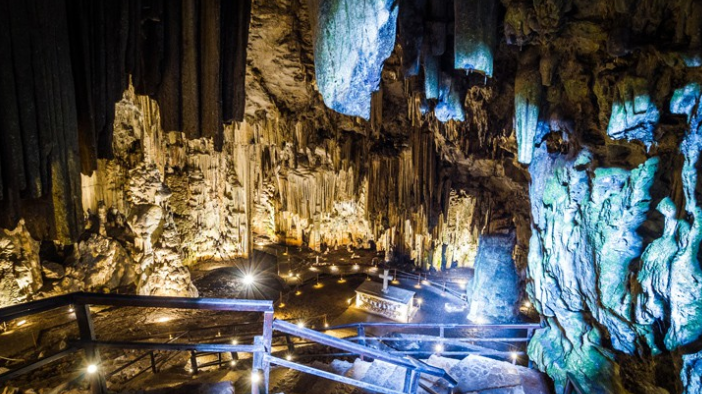Crete, the largest island in Greece, is known for its rich history, stunning landscapes, and unique cultural heritage. Among its many fascinating features are the ancient cave dwellings that dot the island’s rugged terrain. These cave dwellings offer a glimpse into the lives of the island’s early inhabitants and the resourcefulness with which they adapted to their environment. Discovering Cretan cave dwellings is a journey through time, revealing the island’s historical layers and the enduring relationship between its people and the land.
Historical Significance
Cave dwellings in Crete have been used for millennia, dating back to the Neolithic period. These natural formations provided early humans with shelter from the elements and protection from predators. Over time, as human societies evolved, the caves became more than just places of refuge; they were transformed into complex living spaces and even sacred sites.
One of the most significant periods for Cretan cave dwellings was during the Minoan civilization (circa 3000-1450 BCE). The Minoans, renowned for their advanced architecture and sophisticated society, utilized caves for various purposes, including religious ceremonies, burials, and habitation. The sacred Cave of Zeus, located on Mount Ida, is a prime example of a Minoan cave site, believed to be the birthplace of the god Zeus according to Greek mythology.
Notable Cave Dwelling Sites
Several notable cave dwelling sites across Crete offer insights into different historical periods and uses. Here are some key locations:
- Matala Caves: Located on the southern coast of Crete, the Matala caves are perhaps the most famous of all. Carved into the cliffs overlooking the Libyan Sea, these caves were originally used as Roman tombs. In the 1960s, they gained international attention when they became a popular haven for hippies seeking a simple, communal lifestyle. Today, visitors can explore the caves and enjoy the stunning coastal views.
- Margarites Caves: Near the village of Margarites, known for its traditional pottery, these caves were used as dwellings and storage spaces. The caves in this area are a testament to the practical use of natural formations for everyday living in ancient times.
- Psychro Cave (Dikteon Cave): Situated on the Lassithi Plateau, this cave is another significant site tied to Greek mythology. It is considered one of the possible birthplaces of Zeus. The cave’s interior features impressive stalactites and stalagmites, and archaeological excavations have uncovered numerous artifacts, including pottery and religious offerings, indicating its importance as a cult site.
Architectural and Cultural Insights
The cave dwellings of Crete provide valuable insights into the island’s architectural ingenuity and cultural practices. The natural limestone formations of Crete’s mountains were ideal for creating habitable spaces. Early inhabitants would expand and modify these natural caves, adding partitions, hearths, and storage areas to suit their needs.
The use of caves for religious purposes also highlights the spiritual connection the Cretans had with these natural spaces. Many caves were believed to be entrances to the underworld or places where gods and goddesses resided. This spiritual significance is evident in the numerous votive offerings and altars found in caves like Psychro and Ida.
Exploring Cretan Cave Dwellings Today
Today, exploring Cretan cave dwellings is a captivating experience that combines adventure with historical discovery. Many of these sites are accessible to visitors and offer a unique glimpse into the island’s ancient past.
- Guided Tours: Several guided tours are available that take visitors to prominent cave sites, providing historical context and detailed explanations of the findings and their significance.
- Hiking and Caving: For the more adventurous, hiking to remote cave sites can be a thrilling way to explore Crete’s rugged landscape. Proper equipment and a guide are recommended, as some caves can be challenging to navigate.
- Archaeological Museums: To complement the cave exploration, visiting local archaeological museums, such as the Heraklion Archaeological Museum, provides a broader understanding of the artifacts found in these caves and their cultural importance.
Preservation and Respect
While exploring these ancient sites, it is crucial to approach them with respect and a sense of preservation. Many caves are fragile environments that have withstood the test of time, and it is essential to ensure they remain intact for future generations. Visitors should follow guidelines, avoid touching formations, and refrain from leaving any litter behind.
Conclusion
Discovering Cretan cave dwellings is a journey that unveils the island’s deep historical roots and the resourcefulness of its early inhabitants. These ancient shelters, sacred spaces, and communal havens tell stories of survival, spirituality, and cultural evolution. As you explore these fascinating sites, you not only connect with Crete’s rich past but also gain a deeper appreciation for the enduring bond between humanity and the natural world.


